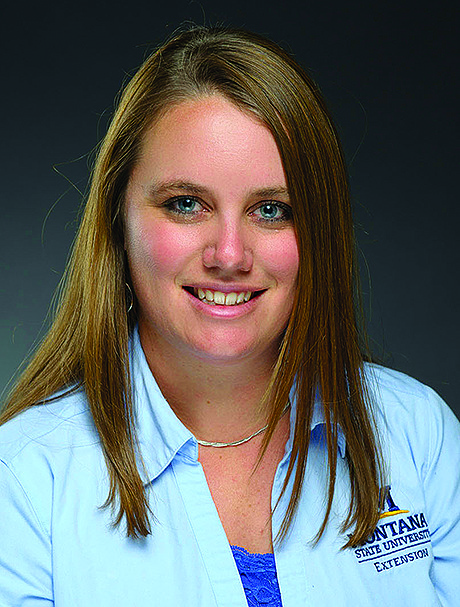Water Smart Landscaping: The Big Picture
 | Author:
Allison Kosto, Broadwater County Extension Agent
MSU Broadwater County Extension Agent |
Water Smart Landscaping: The Big Picture
Allison Kosto
Broadwater County Extension Agent
Something about a lush green lawn is as American as apple pie. It’s a tradition that built a whole industry dedicated to green spaces. In some neighborhoods, it’s seen as a status symbol where neighbors are counting the dandelions while peeking through the curtains. However, did you know that the average home landscape uses as much as 50 percent more of the water than the household?! Earlier in the summer, I wrote an article on water-smart landscaping focusing on turf grass. The purpose of this article is to look at other areas of the landscape to improve the water-smart design.
Now, what is Water Smart Landscaping again? This is a strategy that utilizes techniques for smart water use in the landscape to reduce the overall amount of water needed. Xeriscape is another term that is often used interchangeably with Water Smart Landscaping. However, the primary difference is that Xeriscaping refers to a specific landscape technique that requires zero supplemental watering. On the other hand, Water Smart strategically uses water to make the system more efficient and effective and reduce the overall water used.
One strategy in water-smart design is to strategically choose native plants or drought-tolerant species. However, it’s very important to note that some native plants do need a lot of supplemental watering so don’t assume that just because it's native it needs less water. A perfect example is the quaking aspen tree. In its native environment, it is a riparian tree which means it grows along waterways or areas with high water tables. This means it needs a lot of water to survive in a typical Montana yard. Do research to determine which plants will most effectively work in your specific yard environment to meet your desired goals.
Next, group plants according to their water needs. This is especially important if you have an automatic water system, so you can create specific “hydrozones” to water based on the plant's needs. Turf grass, trees and shrubs should always be in separate hydrozones.
Mulch provides multiple benefits on the landscape. One of which is that it improves water retention by reducing evaporation and moderating soil temperature which reduces the amount and frequency of watering. It also provides other benefits including reducing weed growth and improving organic matter in the soil when organic mulches are used. There are many options for mulch including wood chips, grass clippings or landscape fabric. The use of rock mulches should be avoided though, especially in sunny areas, because they can radiate a large amount of heat and increase moisture loss. Some mulches need to be replaced yearly so consider that in your maintenance plan.
Even though the first article focused entirely on turfgrass, I think it’s important to mention it again because turfgrass is the main user of landscape water. Be targeted about where and how you utilize turfgrass. There are a variety of turfgrass alternatives and drought-tolerant turfgrass species that require less water.
When you water your lawn or landscape, do it in the coolest part of the day. Typically early morning is best. This helps reduce the transpiration and evaporation of water. It’s best to water deep and less frequently. Established lawns need 1 to 2 inches of water every 3 to 5 days. If you have a lower maintenance grass, then it can be even less frequent. This technique teaches the roots to go deeper into the soil profile and be better able to withstand drought. Drip irrigation is a highly effective and water-smart option for trees, shrubs and even many perennial forbs. Slow-release water bags for trees are another great option, especially for young trees.
Another option, if it’s in the budget, is to install (or upgrade) a WaterSense automatic irrigation system. This is different than a clock-based system that automatically turns on when programmed. WaterSense irrigation is controlled using weather or soil moisture data to schedule irrigation only when needed. Even clock-based irrigation systems can be adjusted though. For example, irrigation systems should be adjusted in the spring and fall to account for cooler temperatures and rainfall. Also make sure your water systems are not hitting the driveway, streets or alleys.
For more ideas or resources for WaterSmart Landscaping, contact MSU Extension in Broadwater County at 406-266-9242 or allison.kosto@montana.edu.